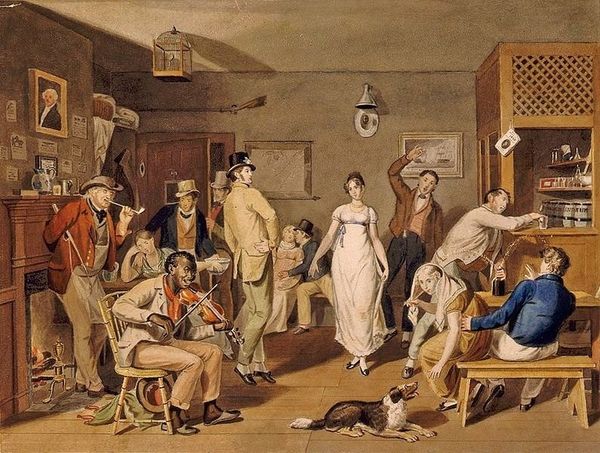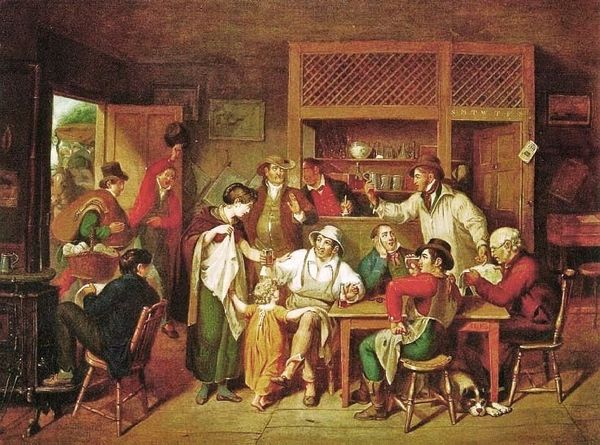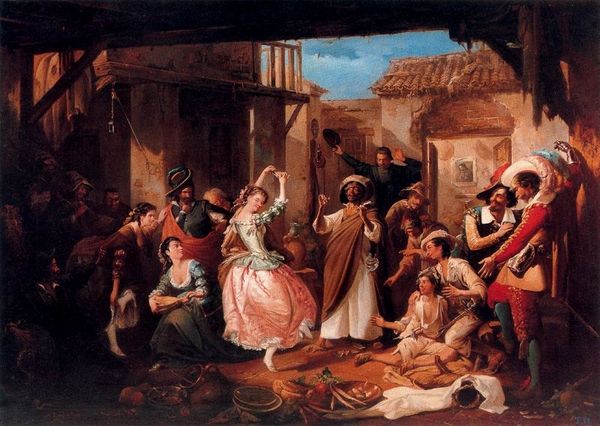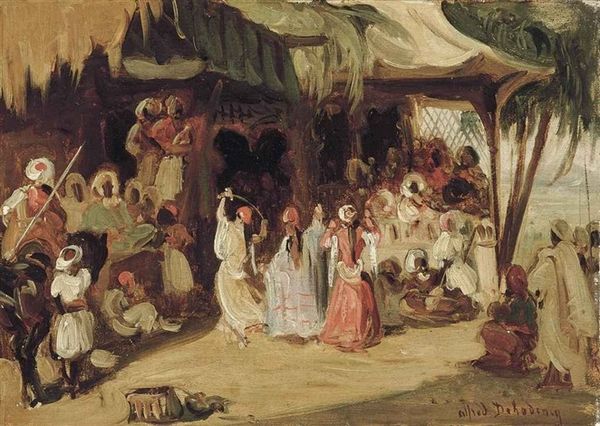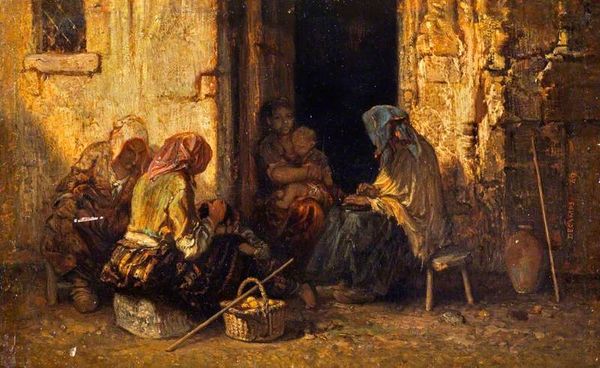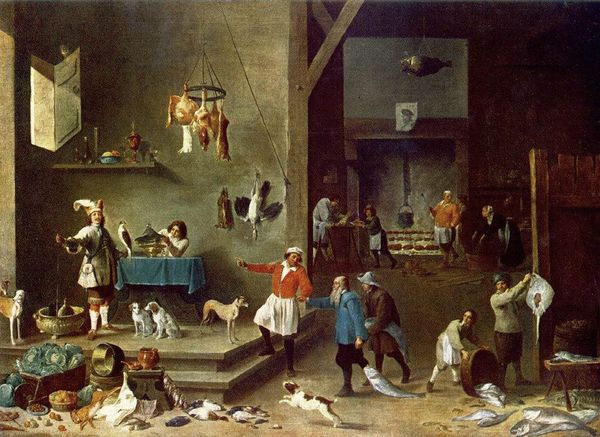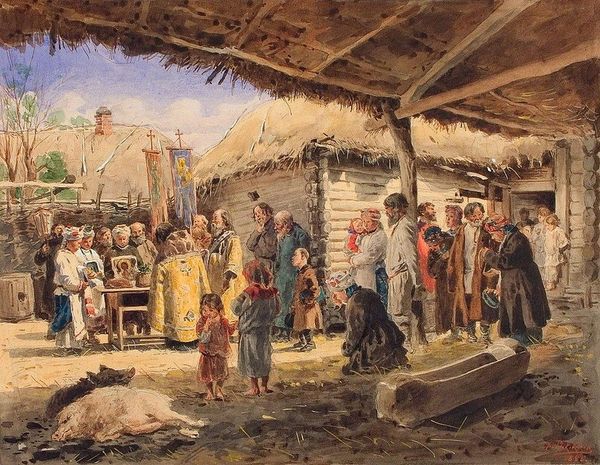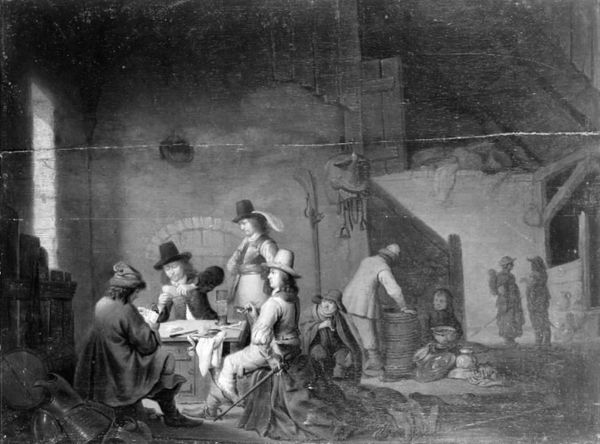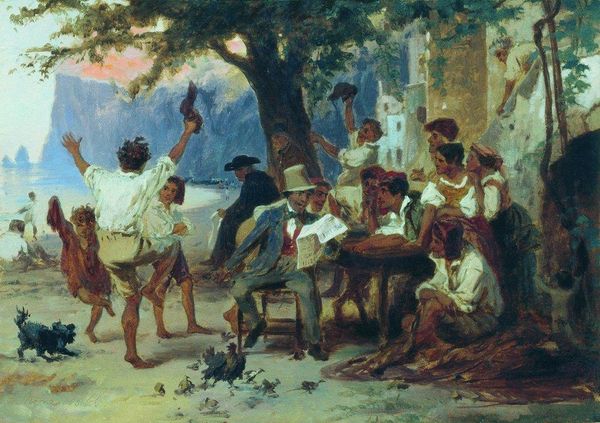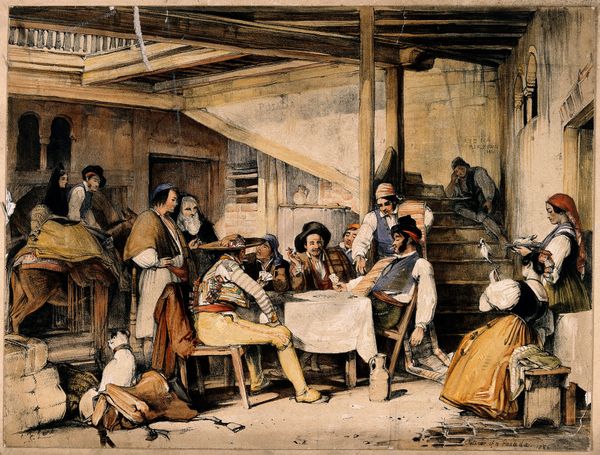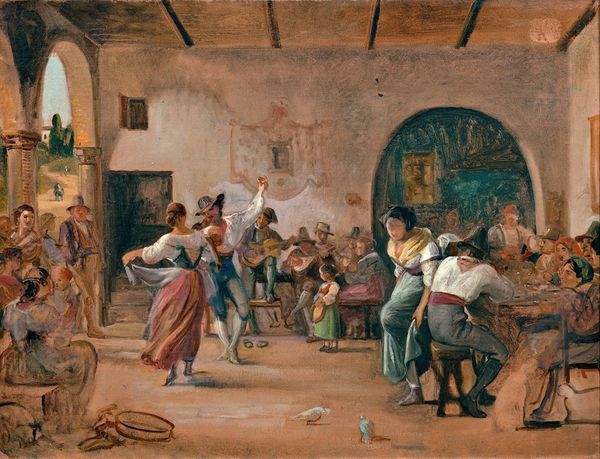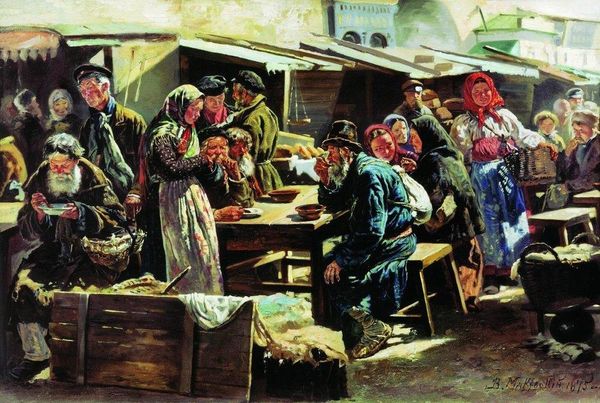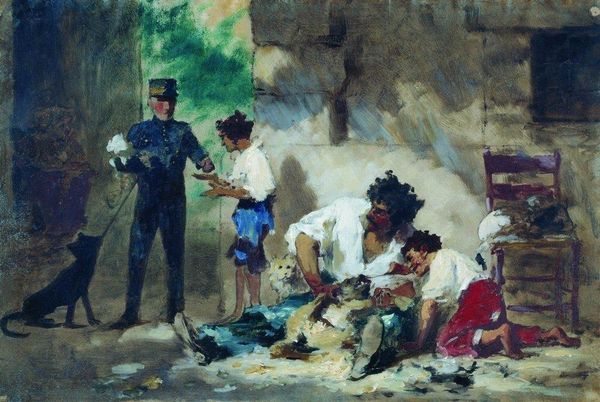
Copyright: Public domain
Editor: This is Fyodor Bronnikov's "Backstage of the Circus," painted in 1859. The medium is gouache. I’m immediately struck by the stark contrast between the vibrant performer and the rather weary-looking crowd. What’s your interpretation of this work? Curator: It’s interesting that you pick up on that contrast. I see this piece as a commentary on the socioeconomic realities underlying spectacle and entertainment. In Romanticism, the artist’s studio or the backstage becomes a space to question what is considered centre and periphery. Editor: Could you elaborate on that? Curator: Bronnikov is revealing the hidden labor, the very real lives of those involved in creating what seems like an ephemeral joy for the audience. We must look to questions of labour and social structures: who are these people, and what were the conditions under which they worked? Editor: So, you’re suggesting it's not just a charming glimpse behind the curtain, but a social critique? Curator: Precisely. Romanticism has elements of critique to the Enlightenment. What are we to make of a time that seeks both reason and also a validation of social order? Are they resting, or are they resigned? Editor: I hadn’t considered it that way, I was only focusing on the narrative being told. But seeing it as a reflection of the social context of the time opens up a whole new dimension. Thanks for sharing. Curator: The layers of interpretation are what makes art so rich, isn't it? Considering the context gives even more depth.
Comments
No comments
Be the first to comment and join the conversation on the ultimate creative platform.
